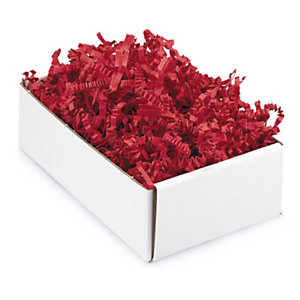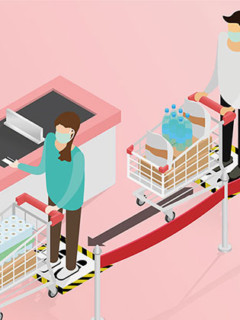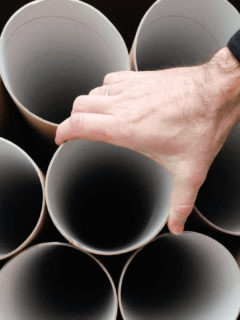MSDs, i.e. musculoskeletal disorders, are the most common reason for sick leave in Germany, at just under 27%, ahead of infections such as the flu (16%) and psychological causes, which include states of exhaustion and burn-out (14.8%). According to BKK records, around 80% of compulsorily insured persons fall ill with MSDs at least once in their lives. The spectrum ranges from short, acute complaints to chronic and often lifelong complaints. This means that, in addition to the suffering of those affected, the economic damage is also immense.
Heavy lifting in warehouses and logistics
Workers in warehousing and logistics are particularly often affected. Here are some tips to identify and prevent the risks of musculoskeletal disorders in your warehouse through better work organisation. To this end, Olivier Raquin , Director / Ergonom Eur. Erg® at Ergonallianz, answers our questions:
Detecting musculoskeletal disorders
What are the main causes of MSDs?
The INRS (National Research and Safety Institute for the Prevention of Occupational Accidents and Diseases, France), identifies three main causes of MSDs:
Below you will find advice on the physical and biomechanical aspects of musculoskeletal disorders to help you assess occupational risks and their prevention.
What are the main symptoms of musculoskeletal disorders?
Occupational diseases recognised under the abbreviation “MSE” show the following symptoms in different parts of the body:
- Carpal tunnel syndrome (risks related to the wrist, ants in the hands, loss of strength, cold hands, etc.).
- Elbow tendonitis (e.g. tennis elbow ) Pain in the elbow and its joints and when gripping.
- Rotator cuff syndrome (shoulder pathology): There are several stages, the later stages are not curable.
- Back pain: lumbago, lumbago, herniated disc, etc.
These four types of occupational diseases, affecting the lower limbs, upper limbs and lumbar region, account for 75% of occupational diseases!
Be aware – and stay aware!
It all comes down to being alert to the onset of these pains, and therefore being able to counteract them from the start: This is a crucial element for the health and safety of your employees at work. This is why on-site supervisors need to be immediately alert when employees report to them shoulder pain that is insidious, for example. This is where a lot of responsibility lies with management and employee leadership.
Preventing musculoskeletal disorders
Biomechanical Factors or: Always the Same Movement Sequences
To prevent biomechanical musculoskeletal disorders, a methodical basis is needed. We give you some important tips that serve as a basis for an analysis and the creation of an action plan.
As we have seen: Three types of factors can potentially be the cause of MSDs (biomechanical, organisational and psychosocial factors).
Therefore, in order to implement an MSE prevention approach, it is first necessary to prevent or at least reduce biomechanical factors such as unergonomic movement sequences and postures, uncomfortable vibrations or the constant, monotonous repetition of certain tasks. Even simple aids such as the palletising bar, which makes deep bending unnecessary when strapping by hand, can help.
The second step is to try to identify organisational factors and psychosocial risks. For example, many companies invest in tools that make work easier for employees; but sometimes companies fail to train their employees in their use, which makes their work even more difficult organisationally.
To fight musculoskeletal disorders, and to make real progress in the prevention of occupational risks, the following points are therefore essential:
- A systematic assessment of the work situation
- At regular intervals
- Along all hierarchical levels
Review revealed increased workplace exposure?
Whereas in other European countries, for example France, subsidies for the purchase of such technical aids for back health in the workplace can be applied for and approved in some cases – according to strict guidelines – in Germany it is the employer who has to bear the costs for such purchases. In individual cases, however, it is worthwhile to enquire about the Employer’s Liability Insurance Association, which, for example, contributes to the purchase of height-adjustable work tables under certain conditions.
Do you know the T-O-P principle?
A combination of technical measures, organisational measures and personal measures can provide a remedy.Avoiding MSDs: Prevention as the key to success
In order to reduce musculoskeletal disorders, the emphasis should primarily be on prevention. After all, once joint cartilage and tendons have been worn down, it is no longer possible to reverse this, or only with difficulty.Fortunately, there are a variety of measures to prevent MSDs. To optimally reduce excessive stress, a combination of several of these measures is often useful. The TOP principle has proved particularly effective in this respect.
T for Technical Measures
The focus here is on creating healthy working conditions. Workplaces must be designed ergonomically and in a way that is suitable for people in order to reduce physical stress to a minimum. In the office, for example, this means ergonomic tables and chairs as well as correctly adjusted workstations.
In the warehouse and in shipping, it is primarily a matter of technical aids. Lifting trucks or conveyor belts should be available, especially for lifting and moving loads, in order to relieve employees. The repetitive movements involved in packing a large number of boxes are also a considerable strain on the back in the long run. The packing table should therefore have the appropriate working height and be properly aligned.
O for organisational measures
In addition to the technical requirements, organisational measures are also part of the prevention of MSDs. In essence, this is about creating binding framework conditions.
This includes, for example, specifications for moving loads (e.g. if they may only be carried by two people) or the scheduling of employees. This means, among other things, the alternation between activities with high and low stress, the organisation of breaks and the allocation to groups, taking into account the physical capacity.
In principle, all physically stressful work should be carried out by healthy and normally able persons without causing damage to health. If increased stress is unavoidable, then tasks should only be carried out by persons who are physically fit to do so.
P for person-related measures
Personal measures in MSD prevention include preliminary occupational medical examinations, workplace health promotion and training employees in lifting techniques and movement sequences that are easy on the back.
All in all, this means that the employer provides individual training and health promotion offers as well as medical check-ups in order to exclude or at least minimise health hazards.
In addition, company integration programmes and employment concepts for older people and the chronically ill are also part of the person-related measures that come into play in the context of MSD prevention.
Machines facilitate packing processes
But technology also makes it possible: the purchase of a wrapping machine, for example, can prevent unpleasant postures of the spine that can occur when manually filming a pallet.But new technologies also help to identify other processes that are perhaps not quite so obviously unergonomic. The company HRV Simulation, for example, works with NAWO Solution technology, which offers an innovative solution for equipping and industrialising ergonomic procedures to detect musculoskeletal disorders . The technological key to this solution? Accurate capture of operator movements. To understand how NAWO Solution works, we met Pierre Foubert, Industrial Engineer at HRV Simulation:
“Our solution works in 3 different phases:
- First, the operator is equipped with motion sensors attached to each part of the body, as we sometimes see in cinema or animated films. Thus, when a virtual avatar performs its activity in a natural way, it reproduces the movement on the tablet included in the NAWO package.
- Then our software very accurately calculates the angulations of each body segment to assess the pain of the different movements of the exerciser.
- Finally, this software generates an automated ergonomic report targeting musculoskeletal stresses and their exposure duration.
Thanks to this solution, warehouse managers can now map the resilience of workstations and assign them an objective resilience level. The aim is then to target the ergonomic measures to be taken.
It also means real time savings: on average, HRV Simulation observes that its customers have reduced ergonomic analysis time by three, with unprecedented analysis precision.”
All info clearly laid out as a whitepaper?
Here you can find our whitepaper for download: Identify and prevent occupational musculoskeletal disorders!















